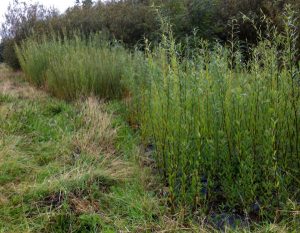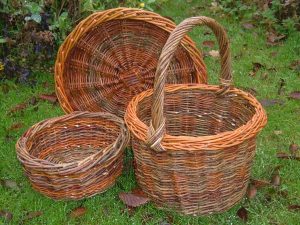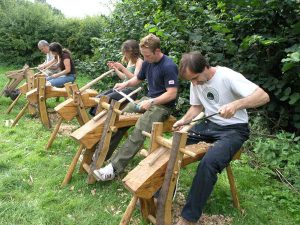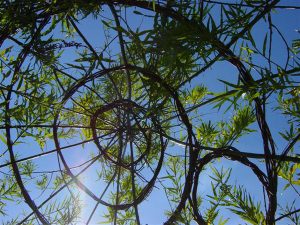Creating white willow involves a number of processes and a large amount of specialist knowledge and skill. A mixture of patience and haste is also required. Some stages take a great deal of time while for others speed is of the essence.
Keeping it natural
On our Somerset willow farm only natural processes are used to create white willow. There are no shortcuts. No bleaches, dyes or paints! Read on to find out how to create white willow.

What is white willow?
White willow is simply a willow rod that has been stripped of its bark without boiling. However, the variety of willow and the timing of the stripping play a big part in the quality of the end product. It’s also worth remembering that white willow isn’t ‘paper’ white. – it is a slightly creamy colour.
A step-by-step guide to creating white willow
- Grow the correct variety of willow. While over 60 different varieties of willow are grown on our farm, only a couple of these are used to produce white willow. The varieties that strip best, and are ultimately the easiest to weave with are; Austrian Grey and Black Maul. That being said, Black Maul can be difficult for an inexperienced willow farmer to grow as it is not disease resistant
- Be patient. It usually takes around 3 years for a willow bed to become established. The rods can then be harvested each year for decades. Rod lengths will vary. Basket makers tend to favour rods which are 3ft to 5ft long. While willow cuttings are relatively easy to grow, a successful crop requires weed free, well-maintained soil. A late frost is every willow farmer’s nightmare.
- Time the harvest. When the leaves start to drop and/or the first frosts arrive, get out and harvest your willow. While this can be done by hand, it is back-breaking work. Specialist machinery allows us to harvest our 200 acres relatively quickly. That being said, it is still hard, physical work
- Grade and sort. If the willow is going to be left to stand in water (see point 5) then now is the time to check the length and the quality. A machine is yet to be invented that can sort and grade willow better than a human being
- Keep the willow in water*. Stand your freshly harvested willow with the butt (bottom) end in around 6 inches of water. On our farm large willow ‘pits’ are used. You need to keep the willow alive through the winter. (Our pits end up being a haven for nature.)
- Wait for spring. Patience is again required as the willow may need to stand in water from around November to May. Once the sap starts to rise and new leaves form, the next steps await. Timing is critical. Not enough sap and the rods won’t strip, leave it too long and they won’t strip either! Rods will be gone too far and drying up. This is when the weather needs to be favourable. Don’t attempt the next steps if rain is forecast
- Strip, wash, dry and store. Next come a raft of steps that need to be completed on the same day. If not, the willow may ‘yellow’. Adapted machinery has made the stripping process on our farm a much quicker and easier task. Not so long ago each rod had to be pulled through a metal brake to remove the bark. While that’s fine for a few bundles worth, it can be soul-destroying when thousands of rods need to be stripped!Once the bark has been carefully removed the willow rods need to be washed, checked and stood out to dry. Separate the rods and stand them on their but end in a dry place – preferably outside. (Our white willow rods dry outdoors on long drying racks and against fencing.) Once the rods have dried they need to be stored in a cool, dark, dry place. Ideally, somewhere air can circulate
*It is possible to strip freshly harvested willow, but this can be tricky.

Creating white willow is incredibly labour intensive and a very time-consuming task. As the saying goes, ‘if a job’s worth doing it’s worth doing well’ and this is certainly the case with white willow. On our farm, white willow is definitely a labour of love.








1 Comment
Wow! just. Wow! who knew?this stuff even existed. And that ppl who do know exist. It would have been good to find out what else – besides chairs or baskets – the white willow ends up becoming. I mean is anyone thinking outside the traditional box? But anyway. Thank you for a really interesting article. Just. Wow!